MEDIN
Type of resources
Available actions
Topics
Keywords
Contact for the resource
Provided by
Years
Formats
Representation types
Update frequencies
Service types
Scale
-
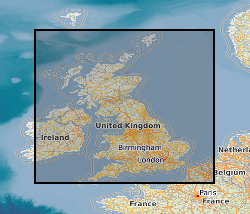
This data set contains the following original data for the deep seismic reflection surveys conducted by the BGS in various parts of the UK. The data consists of observers' logs, surveyors' reports, location data tapes, field data recording tapes and processed data tapes. The processed tapes are at various stages of processing from demultiplexed field data to migrated stack (not all available for all profiles) These data are kept as archive copies. They are generally available for academic and commercial use, subject to payment of fees (and, in a few cases, the agreement of co-owners of the data rights). There are Approximately 20 files of written records and 200 tapes.
-
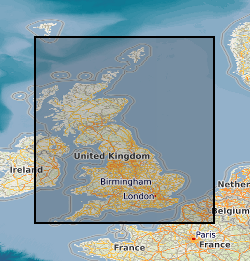
This is a digital version of the paper based 1:1M scale Offshore Quaternary map, North and South sheets. Customers should be aware that, given the age of the paper based maps, the digital version is not quality assured and BGS can accept no liability for the information held on the digital map. In addition, published 1:250,000 Quaternary maps are available. These contain more detailed subdivision of the Quaternary succession. The original paper based map covers the UK Continental shelf. The paper map is symbolised using lithology and chronology. The lithological boundaries were compiled from the data published in the BGS 1:250,000 Quaternary Geology map series and from revised interpretation of core and borehole data. Core and borehole sites are commonly 5 to 20 km apart, thus the lithological divisions are generalised. The formations and sequences identified by BGS have been grouped into Quaternary age ranges. The geological codes assigned to the digital version of the map have been compiled using the key information held on the paper map. The LEX-ROCK style codes combine the lithology and chronology and have been subject to the standard BGS approval process.
-
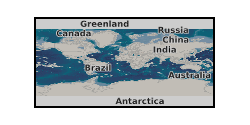
Data from the British Geological Survey's GeoIndex Offshore (cultural data) theme are made available for viewing here. GeoIndex is a website that allows users to search for information about BGS data collections covering the UK and other areas world wide. Access is free, the interface is easy to use, and it has been developed to enable users to check coverage of different types of data and find out some background information about the data. More detailed information can be obtained by further enquiry via the web site: www.bgs.ac.uk/geoindex.
-
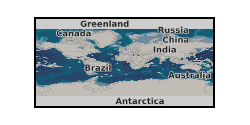
Data from the British Geological Survey's GeoIndex Offshore theme are made available for viewing here. GeoIndex is a website that allows users to search for information about BGS data collections covering the UK and other areas world wide. Access is free, the interface is easy to use, and it has been developed to enable users to check coverage of different types of data and find out some background information about the data. More detailed information can be obtained by further enquiry via the web site: www.bgs.ac.uk/geoindex.
-
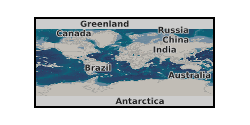
BGS offshore marine products are made available to view via this web map service. The 1:250 000 scale offshore geological maps in the UTM series (Universal Transverse Mercator projection) are available digitally as two themes: bedrock geology (DigRock250) and sea-bed sediments (DigSBS250). Marine Hard Substrate Dataset (DiGHardSubstrate250k) is also made available via this service.
-

BGS Data Catalogue discovery service API. Provides human and computer accessible interface to BGS metadata records
-

Particle Size Analysis (PSA) and organic carbon content data from marine sediment sampling of two plots within the Trevose Box off south-west England between 14 - 18 April 2023 before and after fishing. This DEFRA funded FISP (Fisheries Industry Science Partnerships scheme) project aimed to understand the acute effects of scallop dredging and beam trawling on seabed carbon. The project was led by Bangor University in collaboration with Imperial College London, CEFAS, Western Fish Producers Organisation and the South Western Fish Producer Organisation. The study was conducted in two areas offshore south-west England, UK. The areas were within the Trevose box, which is a management area closed to bottom fishing for the months of January, February and March each year. This allowed us to sample areas which had not been exposed to fishing immediately before our sampling which would reduce the chance of seeing any effect from our experimental fishing. One plot was designated an area that would be experimentally fished by a beam trawler, and another by a scallop dredger (Figure 1). The plots were chosen to minimise differences in depth, seabed habitat, sediment type, wave energy and tidal currents within and between them. Both were chosen where their respective types of fishing gear had been used previously, although scallop dredging has been less common in this area in recent years. The sampling from the RV Prince Madog and experimental fishing from the fishing vessels took place between 14 – 18th April 2023. Before any fishing activity took place, grab sampling was conducted in the dredge plot and in the beam trawl plot that would be later fished to varying amounts, which will be referred to as ‘Times fished’ or ‘fishing intensity’. A 0.1 m2 Day grab was used. When the day grab was onboard two cores were used to subsample the grab sample as deep as possible, these were then sliced in 1 cm intervals and frozen onboard for later carbon analysis. A homogenised sample from the day grab was also taken for Particle Size Analysis. After the ‘Before’ grab samples were taken, a beam trawler and scallop dredger towed their gear along the sampled lanes in each respective plot. The 'After’ samples were taken after that fishing activity. Please see report for full details on how the PSA and organic content values were determined. Whitton, T.A., Austin, M., Newbould, A., Kennedy, H., Allender, S., Cavan, E., Parker, R., North, C., Hatchman, J., Hiddink, J.G. (2024) The impact of mobile demersal fishing on blue carbon in seabed sediments. Report to DEFRA. https://research.bangor.ac.uk/portal/en/researchoutputs/the-impact-of-mobile-demersal-fishing-on-blue-carbon-in-seabed-sediments(1fa1845a-6669-4b5b-83e1-234a6eafc75c).html
-
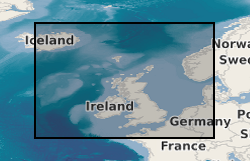
The British Geological Survey hold a collection of data recorded during marine geophysical surveys which includes digital data and analogue records. These data result from approximately 350,000 line kilometres of multi-instrument geophysical survey lines. The dataset includes seismic, sonar, magnetic, gravity, echo sounder, multibeam bathymetry and navigation data. The seismic data are mainly airgun, sparker, boomer and pinger data. Most of the data were collected by BGS, but the collection also includes some third party data. The data are primarily from the UKCS (United Kingdom Continental Shelf). The data are stored within the National Geoscience Data Centre (NGDC) as the Marine Environmental Data and Information Network (MEDIN) Data Archive Centre (DAC) for Geology and Geophysics. The majority of legacy geophysical paper records are available as scanned images. Other records can be scanned on request. Older records are of variable quality. Data not yet available online, including digital SEG-Y data, are available on request from enquiries@bgs.ac.uk. The data are applicable to a wide range of uses including environmental, geotechnical, geophysical and geological studies. For more information, refer to Fannin, N. G. T. (1989) Offshore Investigations 1966-87. British Geological Survey Technical Report WB/89/2, British Geological Survey.
-
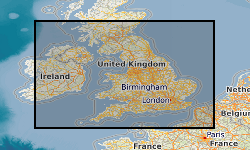
Data from Marine Conservation Zone (MCZ) surveys are archived in the MEDIN Data Archive Centre (DAC) for Geology and Geophysics at the British Geological Survey. This includes geology (Particle Size Analysis) data and multibeam backscatter data. Data are delivered via the BGS Offshore GeoIndex. Additional data are available on request enquiries@bgs.ac.uk. Other data types are archived with the other MEDIN DACs as appropriate (UKHO DAC for bathymetry data and DASSH DAC for biological data). https://www.gov.uk/government/collections/marine-conservation-zone-designations-in-england.
-

A new, robust seismic hazard model and seismic hazard maps for the UK offshore Exclusive Economic Zone using the latest available data and recent advances in seismic hazard methodology and a Monte Carlo-based approach for probabilistic seismic hazard analysis. These are intended to update the current maps for UK waters published in 2002. We developed a comprehensive catalogue of earthquake activity across the region by combining existing earthquake catalogues and data from regional and local monitoring agencies. We modelled earthquake occurrence across the region using a seismic source characterisation (SSC) model that consists of a series of zones, where seismicity is considered to be homogeneous, based on tectonics, geology and seismicity of the study area. We use four different seismic source zone models within the SSC to capture the epistemic uncertainty in different rupture scenarios. A logic tree approach was used to account for the epistemic uncertainty in earthquake activity rates, maximum magnitude, earthquake depth distribution, and faulting style. Ground motions are estimated for different rupture scenarios using a ground motion characterisation (GMC) model that consists of five multiple ground motion prediction equations considered to be applicable to the region. The GMPEs are included in a logic tree where the weights are informed by the fit between observed and modelled ground motions. The GMC model also includes the host-to-target adjustments and a single-station sigma model. Hazard is calculated at 4585 individual points spaced at 0.125° in latitude and 0.25° in longitude for peak ground acceleration (PGA) and spectral acceleration at 0.2 s (SA0.2 s) and 1.0 s (SA1.0 s) for 5% damping and rock conditions and the return periods of 95, 475, 1100, 2475, and 5000 years. This is the first time that maps of the seismic hazard at short (0.2 s) and long periods (1.0 s) have been produced for UK waters. Hazard curves, uniform hazard spectra, and disaggregation analysis have been calculated for three offshore carbon capture and storage sites (Endurance, Acorn, and HyNet North West). New offshore hazard maps for the UK waters will support UK decarbonisation by providing owners and operators of offshore structures with robust estimates of seismic hazard for new and existing sites. The results will also inform regulatory decisions to ensure safe operating practices in the industry and help identify areas of higher hazard where further site-specific studies might be needed. Finally, it will provide a robust baseline for tectonic seismic activity in the North Sea that can be used to help discriminate any seismicity induced by operations, such as CCS, in the event it occurs. The technical report by Mosca et al. (2024), which provides a detailed description of the methods and results, together with the project’s products, can be found in (http://www.earthquakes.bgs.ac.uk/hazard/UKhazard.html).
 NERC Data Catalogue Service
NERC Data Catalogue Service